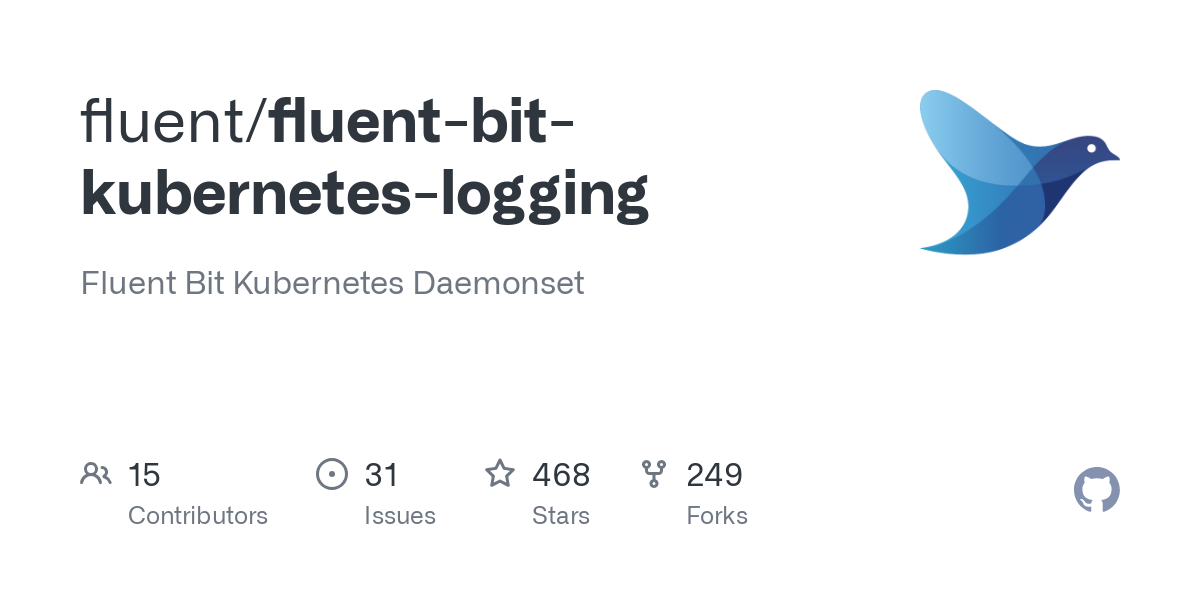[Blog Operator] 블로그 Logging 하기
![[Blog Operator] 블로그 Logging 하기](/content/images/size/w1200/2025/01/20250131_193018.png)
Issue
1월 31일 새벽 4시쯤 예상치 못한 부하가 갑자기 발생하였는데, 이때 Application의 로그를 Lens나 kubectl logs 와 같은 명령어로 보다보니 로깅 관리하기가 힘들어 아래와 같이 Grafana + fluent-bit 조합을 통해 간편하게 로그 조회를 하기 위해 구축하고자한다.

구축
우선 로그를 저장할 Time Series Database인 InfluxDB를 설치해준다.
$ wget -q https://repos.influxdata.com/influxdata-archive_compat.key
$ echo '393e8779c89ac8d958f81f942f9ad7fb82a25e133faddaf92e15b16e6ac9ce4c influxdata-archive_compat.key' | sha256sum -c && cat influxdata-archive_compat.key | gpg --dearmor | sudo tee /etc/apt/trusted.gpg.d/influxdata-archive_compat.gpg > /dev/null
$ echo 'deb [signed-by=/etc/apt/trusted.gpg.d/influxdata-archive_compat.gpg] https://repos.influxdata.com/debian stable main' | sudo tee /etc/apt/sources.list.d/influxdata.list
$ sudo apt-get update && sudo apt-get install influxdb
$ sudo systemctl enable --now influxdb아래와 같이 influxDB에 접근하여 Database를 생성해준다.
$ influx
> create database nginx_log_db그 후 현재 Kubernetes로 블로그를 운영 중이므로 fluent-bit를 아래와 같이 설치해준다.
GitHub - fluent/fluent-bit-kubernetes-logging: Fluent Bit Kubernetes Daemonset
Fluent Bit Kubernetes Daemonset. Contribute to fluent/fluent-bit-kubernetes-logging development by creating an account on GitHub.

$ wget https://raw.githubusercontent.com/fluent/fluent-bit-kubernetes-logging/master/fluent-bit-service-account.yaml
$ wget https://raw.githubusercontent.com/fluent/fluent-bit-kubernetes-logging/master/fluent-bit-role.yaml
$ wget https://raw.githubusercontent.com/fluent/fluent-bit-kubernetes-logging/master/fluent-bit-role-binding.yaml위 3개의 파일을 다운 받고 아래와 같이 daemonset과 configmap을 작성해주자.
fluent-bit-configmap.yaml
apiVersion: v1
kind: ConfigMap
metadata:
name: fluent-bit-config
namespace: logging
labels:
k8s-app: fluent-bit
data:
# Configuration files: server, input, filters and output
# ======================================================
fluent-bit.conf: |
[SERVICE]
Flush 5
Log_Level info
Daemon off
Parsers_File parsers.conf
HTTP_Server On
HTTP_Listen 0.0.0.0
HTTP_Port 2020
@INCLUDE input-kubernetes.conf
@INCLUDE filter-kubernetes.conf
@INCLUDE output-kafka.conf
input-kubernetes.conf: |
[INPUT]
Name tail
Tag kube.nginx.*
Path /var/log/containers/*ingress-nginx-controller*.log
Parser nginx
DB /var/log/flb_kube.db
Mem_Buf_Limit 5MB
Skip_Long_Lines On
Refresh_Interval 10
filter-kubernetes.conf: |
[FILTER]
Name kubernetes
Match kube.nginx.*
Kube_URL https://kubernetes.default.svc:443
Kube_CA_File /var/run/secrets/kubernetes.io/serviceaccount/ca.crt
Kube_Token_File /var/run/secrets/kubernetes.io/serviceaccount/token
Kube_Tag_Prefix kube.var.log.containers.
Merge_Log On
Merge_Log_Key log_processed
K8S-Logging.Parser On
K8S-Logging.Exclude Off
output-kafka.conf: |
[OUTPUT]
Name influxdb
Match kube.nginx.*
Host influxdb.dispiny.life
Port 8086
Database nginx_log_db
parsers.conf: |
[PARSER]
Name apache
Format regex
Regex ^(?<host>[^ ]*) [^ ]* (?<user>[^ ]*) \[(?<time>[^\]]*)\] "(?<method>\S+)(?: +(?<path>[^\"]*?)(?: +\S*)?)?" (?<code>[^ ]*) (?<size>[^ ]*)(?: "(?<referer>[^\"]*)" "(?<agent>[^\"]*)")?$
Time_Key time
Time_Format %d/%b/%Y:%H:%M:%S %z
[PARSER]
Name apache2
Format regex
Regex ^(?<host>[^ ]*) [^ ]* (?<user>[^ ]*) \[(?<time>[^\]]*)\] "(?<method>\S+)(?: +(?<path>[^ ]*) +\S*)?" (?<code>[^ ]*) (?<size>[^ ]*)(?: "(?<referer>[^\"]*)" "(?<agent>[^\"]*)")?$
Time_Key time
Time_Format %d/%b/%Y:%H:%M:%S %z
[PARSER]
Name apache_error
Format regex
Regex ^\[[^ ]* (?<time>[^\]]*)\] \[(?<level>[^\]]*)\](?: \[pid (?<pid>[^\]]*)\])?( \[client (?<client>[^\]]*)\])? (?<message>.*)$
[PARSER]
Name nginx
Format regex
Regex ^(?<remote>[^ ]*) (?<host>[^ ]*) (?<user>[^ ]*) \[(?<time>[^\]]*)\] "(?<method>\S+)(?: +(?<path>[^\"]*?)(?: +\S*)?)?" (?<code>[^ ]*) (?<size>[^ ]*)(?: "(?<referer>[^\"]*)" "(?<agent>[^\"]*)")?$
Time_Key time
Time_Format %d/%b/%Y:%H:%M:%S %z
[PARSER]
Name json
Format json
Time_Key time
Time_Format %d/%b/%Y:%H:%M:%S %z
[PARSER]
Name docker
Format json
Time_Key time
Time_Format %Y-%m-%dT%H:%M:%S.%L
Time_Keep On
[PARSER]
Name syslog
Format regex
Regex ^\<(?<pri>[0-9]+)\>(?<time>[^ ]* {1,2}[^ ]* [^ ]*) (?<host>[^ ]*) (?<ident>[a-zA-Z0-9_\/\.\-]*)(?:\[(?<pid>[0-9]+)\])?(?:[^\:]*\:)? *(?<message>.*)$
Time_Key time
Time_Format %b %d %H:%M:%S
[PARSER]
Name ghost_log
Format regex
Regex ^\[(?<timestamp>[^\]]+)\] (?<level>[A-Z]+) "(?<method>[A-Z]+) (?<path>[^\s]+)" (?<status>\d+) (?<latency>\d+)ms$
Time_Key timestamp
Time_Format %Y-%m-%d %H:%M:%S
fluent-bit-ds.yaml
apiVersion: apps/v1
kind: DaemonSet
metadata:
name: fluent-bit
namespace: logging
labels:
k8s-app: fluent-bit-logging
version: v1
kubernetes.io/cluster-service: "true"
spec:
updateStrategy:
type: RollingUpdate
selector:
matchLabels:
k8s-app: fluent-bit-logging
template:
metadata:
labels:
k8s-app: fluent-bit-logging
version: v1
kubernetes.io/cluster-service: "true"
annotations:
prometheus.io/scrape: "true"
prometheus.io/port: "2020"
prometheus.io/path: /api/v1/metrics/prometheus
spec:
containers:
- name: fluent-bit
image: fluent/fluent-bit:1.5
imagePullPolicy: Always
ports:
- containerPort: 2020
readinessProbe:
httpGet:
path: /api/v1/metrics/prometheus
port: 2020
livenessProbe:
httpGet:
path: /
port: 2020
resources:
requests:
cpu: 5m
memory: 10Mi
limits:
cpu: 50m
memory: 60Mi
volumeMounts:
- name: varlog
mountPath: /var/log
- name: varlibdockercontainers
mountPath: /var/lib/docker/containers
readOnly: true
- name: fluent-bit-config
mountPath: /fluent-bit/etc/
terminationGracePeriodSeconds: 10
volumes:
- name: varlog
hostPath:
path: /var/log
- name: varlibdockercontainers
hostPath:
path: /var/lib/docker/containers
- name: fluent-bit-config
configMap:
name: fluent-bit-config
serviceAccountName: fluent-bit
tolerations:
- key: node-role.kubernetes.io/master
operator: Exists
effect: NoSchedule
- operator: "Exists"
effect: "NoExecute"
- operator: "Exists"
effect: "NoSchedule"그 후 argocd로 배포할 경우 아래와 같이 Application을 작성해주고, 수동으로 할 경우 kubectl로 설치해주면 된다.
apiVersion: argoproj.io/v1alpha1
kind: Application
metadata:
name: fluentbit
namespace: argocd
spec:
destination:
name: ''
namespace: logging
server: https://kubernetes.default.svc
source:
path: fluentbit/
repoURL: https://github.com/dispiny/local-kubernetes-manifest.git
targetRevision: HEAD
sources: []
project: default
syncPolicy:
automated:
prune: false
selfHeal: false
syncOptions:
- CreateNamespace=true
- ServerSideApply=true
그 후 위와 같이 배포가 정상 적으로 끝났을 경우 influxDB에 접근 해서 아래와 같이 데이터가 잘 들어왔는지 조회해본다.
> show measurements
> select * from "kube.nginx.var.log.containers.ingress-nginx-controller-xxx-xxx_ingress-nginx_controller-xxx.log"
모니터링 구성
아래와 같이 Grafana에 InfluxDB를 Data source를 추가해준다.

Logs 대쉬보드를 만들고 아래와 같이 Query문을 작성해서 다음과 같이 Dashboard Widget을 생성해준다.
SELECT "log" FROM "kube.nginx.var.log.containers.ingress-nginx-controller-xxxx-xxxx_ingress-nginx_controller-xxxxxx.log"
위와 같이 nginx ingress controller의 로그가 뜨는 것을 볼 수 있다.

![[Blog Operator] 블로그에 부하를 걸어보자](/content/images/size/w960/2025/01/image-16-1.png)
![[Kubernetes] Vault Secrets Operator(VSO) 활용해 Kubernetes Secrets를 유출 없이 사용하기](/content/images/size/w960/2025/02/img.jpg)